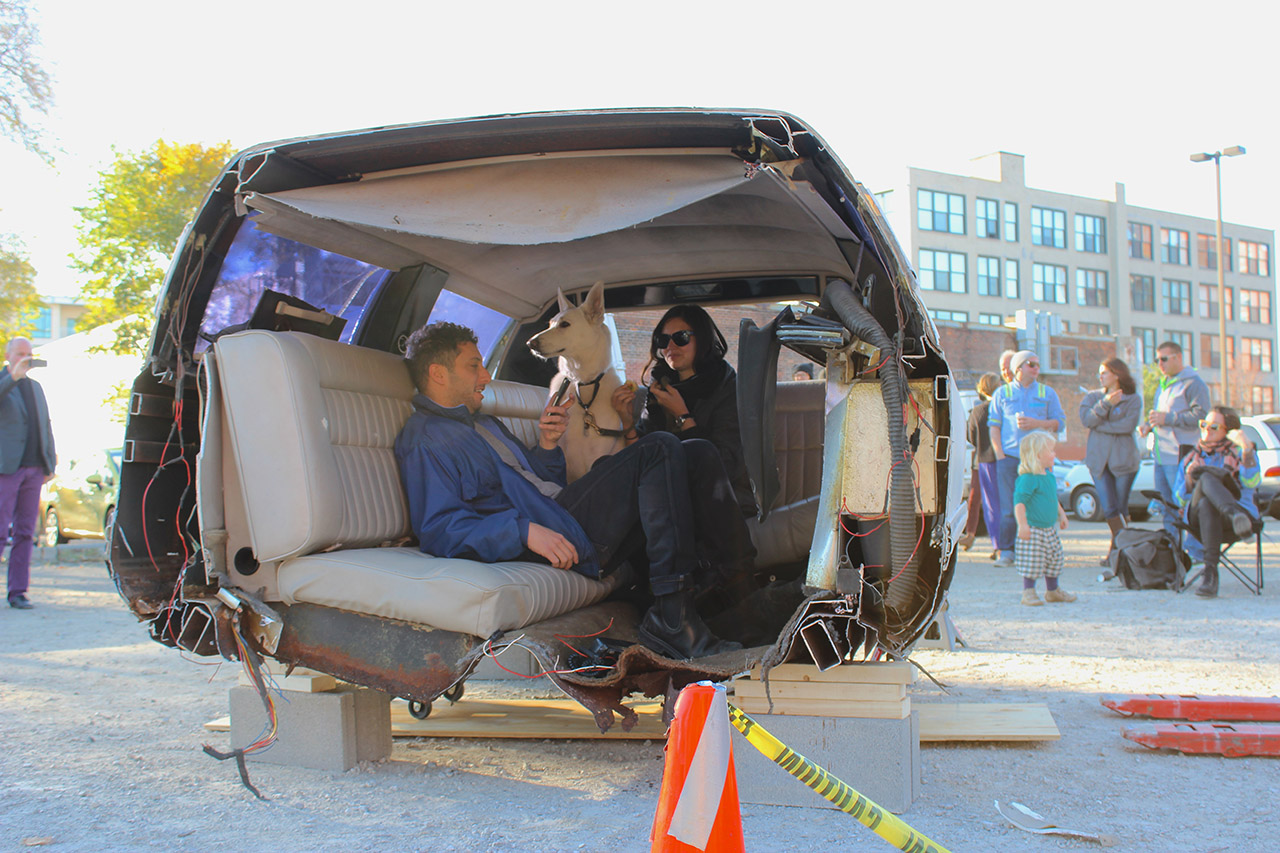
In the article “Slicing up a Limo as a Metaphor for Detroit,” artist Jon Sasaki, a team of students from Cranbrook Art Academy, and two well-known welders sliced and diced a luxurious limousine into several irrelevant pieces. The destruction of the limousine included a more intricate motive other than the desire to rip apart a nice piece of machinery. A limousine can be seen as a symbol for wealth and in some cases the rise of social hierarchy. Sasaki and his team took advantage of the symbol for excessive wealth and literally (and symbolically) cut it into pieces.
Sasaki’s performance was titled “The All New 2015 Rightsized Limo” and took approximately six hours to complete. The idea of the project was simple- remove the middle stretch of the limo by cutting away the front and rear ends of the vehicle, which were then pushed together to create a “rightsized” version of the vehicle. The term “rightsized” is somewhat ambiguous, however, in this situation it is characterized as the appropriate means of material possession, which does not cross an excessive boundary. In other words, the idea of a car that is ninety-five percent wasted space is an unnecessary use of money in comparison with those who struggle to find the means to pay for rent or their next meal. However, Sasaki’s performance attracted more than a news camera and a detailed article. It also instigated an art-tailgate party in the Museum of Contemporary Art Detroit (MOCAD) parking lot. The various spectators at the event included Detroit art scene personages, curious outsiders, and eager reporters.
Throughout the performance, Sasaki and his team carried out many intense operations of destruction. The two celebrity welders, Ben Wolf and ‘Zeph’ arrived at the performance site in a limo of their own, chauffeured by two women and a man dressed in older women’s clothing. Sparks flew from the car as Ben Wolf shredded the metal monster with his giant circular saw. Meanwhile, Zeph attacked other weak parts of the limo as the rest of the team stood by with a fire extinguisher in case of an unexpected catastrophe. However in most of Sasaki’s art-making, some of these minor dramas and setbacks become a defining factor to his collaborative process. In his 2014 “Performance to Double the MOCCA’s Visitor Figures,” Sasaki jogged around every visitor that walked through the door, thereby doubling the museum’s attendance for the duration of the performance. The common thread in most of Sasaki’s art works stems from the innocence and naivety of everyday life. The destruction of a limousine and the desire to increase the head count at the MOCCA perpetuates the lighthearted response of “why not?” And for the most part, his works relay a strong conceptual foundation through an almost “immature” style.
As Detroit increasingly grows in unsupportable land mass, the downsizing of the excessive vehicle resonates obvious relevance for the people in the city. In its prime, Detroit was able to take on massive dimensions- similarly to that of San Francisco, Boston, and Manhattan. However, after the limousine project viciously tore away the excess parts of the vehicle, the remaining object lost all of its functions. By attempting to remove massively populated areas of Detroit, similarly to the removal of the limousine, the city will lose its ability to properly function. Sasaki stated, “Detroit is often put forward as the textbook example of a North American shrinking city. I was interested in the idea of grafting that contraction onto a large vehicle… streamlining the car itself at the expense of a large section that will no longer be along for the ride so to speak, and memorializing what was sacrificed.” Although a limousine has multifaceted purposes, Sasaki chose to use the vehicle as a symbol for material excess. Through his performance, he was able to compare the excess of the oversized vehicle to the overpopulated city of Detroit.
Source: http://hyperallergic.com/254357/slicing-up-a-limo-as-a-metaphor-for-detroit/







